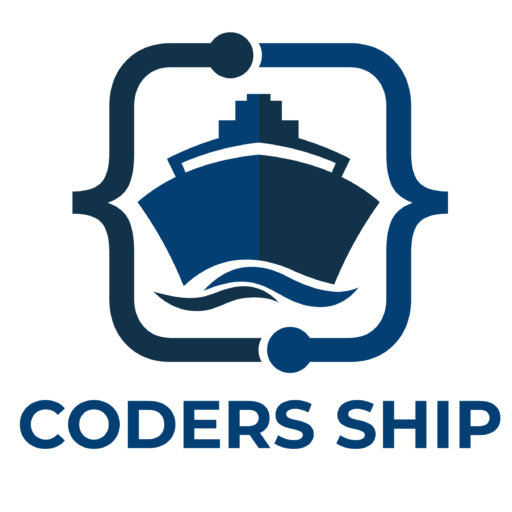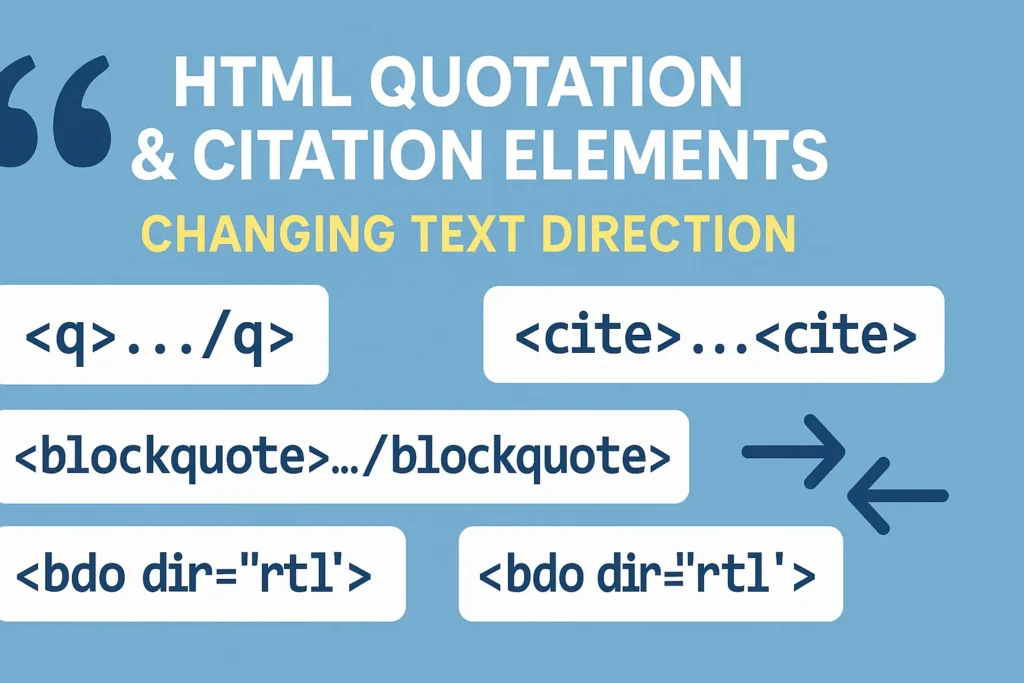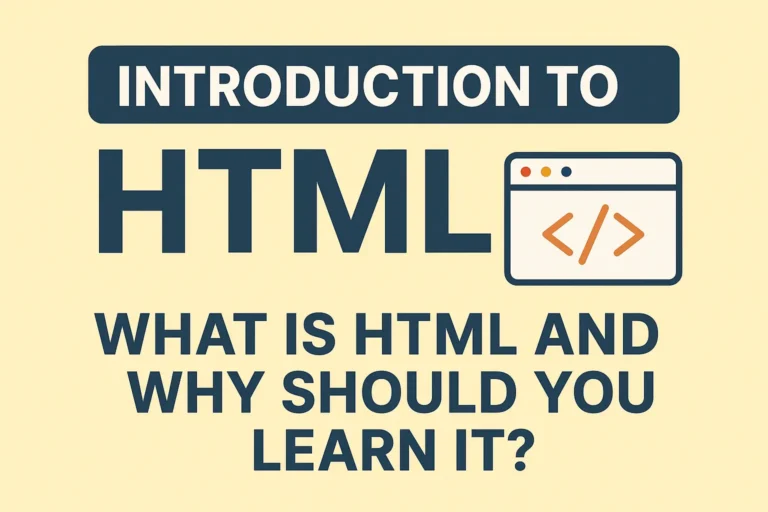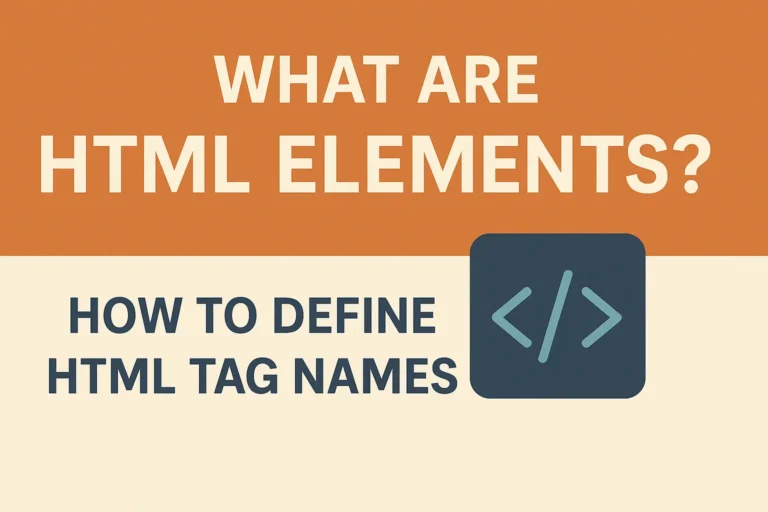HTML provides specialized tags for quotations, citations, and bidirectional text control, helping you structure content semantically for better readability and accessibility.
In this guide, you’ll learn:
✔ When to use <blockquote>, <q>, and <cite>
✔ How to attribute quotes properly
✔ Controlling text direction with <bdo> and dir
✔ Best practices for semantic markup
1. Quotation Elements
1. Block Quotes: <blockquote>
For long quotations (typically displayed as indented paragraphs).
Always pair with
<cite>for attribution.
<blockquote cite="https://example.com/source">
<p>This is an important quoted passage from another source.</p>
<footer>— Author Name, <cite>Source Title</cite></footer>
</blockquote>
Key Features:
Search engines recognize cited sources.
Browsers add default indentation (override with CSS).
2. Inline Quotes: <q>
For short quotations within a sentence (auto-wraps in quotation marks).
<p>As Shakespeare said, <q>To be or not to be</q>.</p>
Note:
Use CSS
quotesproperty to customize symbols (e.g.,« »).
3. Citations: <cite>
Marks the title of creative works (books, movies) or attribution.
<p>Learn more in <cite>HTML: The Definitive Guide</cite>.</p>
2. Changing Text Direction
1. Bidirectional Override: <bdo>
Forces text direction (left-to-right or right-to-left).
| Attribute | Effect | Example |
|---|---|---|
dir="ltr" | Left-to-right | <bdo dir="ltr">Hello</bdo> |
dir="rtl" | Right-to-left | <bdo dir="rtl">Hello</bdo> → “olleH” |
Use Case:
Arabic/Hebrew content mixed with LTR languages.
2. Global Direction: dir Attribute
Sets base direction for entire elements:
<p dir="rtl">هذا نص باللغة العربية</p>
Supported Values:
ltr(default)rtlauto(browser guesses based on content)
3. Semantic vs. Presentational Approaches
Right Way (Semantic)
<blockquote cite="https://example.com">
<p>Semantic HTML improves accessibility.</p>
<footer>— Web Developer, <cite>MDN Docs</cite></footer>
</blockquote>
Wrong Way (Presentational)
<div style="margin-left: 40px; font-style: italic;">
<p>Non-semantic quotes are harder to maintain.</p>
<div>— Anonymous</div>
</div>
4. Best Practices
✅ Always attribute quotes with <cite>.
✅ Use <bdo> sparingly (only for mixed-direction content).
✅ Prefer semantic tags for SEO and screen readers.
✅ Test RTL layouts with Arabic/Hebrew placeholder text.
5. Practical Examples
Multilingual Page Snippet
<article>
<h2>Quotes About Technology</h2>
<blockquote dir="ltr" cite="https://example.com/tesla">
<p>The present is theirs; the future, for which I worked, is mine.</p>
<footer>— Nikola Tesla, <cite>My Inventions</cite></footer>
</blockquote>
<p dir="rtl"><bdo dir="rtl">التقنية هي المستقبل</bdo> (Technology is the future).</p>
</article>
Final Thoughts
Mastering these tags helps you:
🔹 Properly attribute sources (avoid plagiarism).
🔹 Support multilingual content (RTL languages).
🔹 Boost SEO with structured data.






